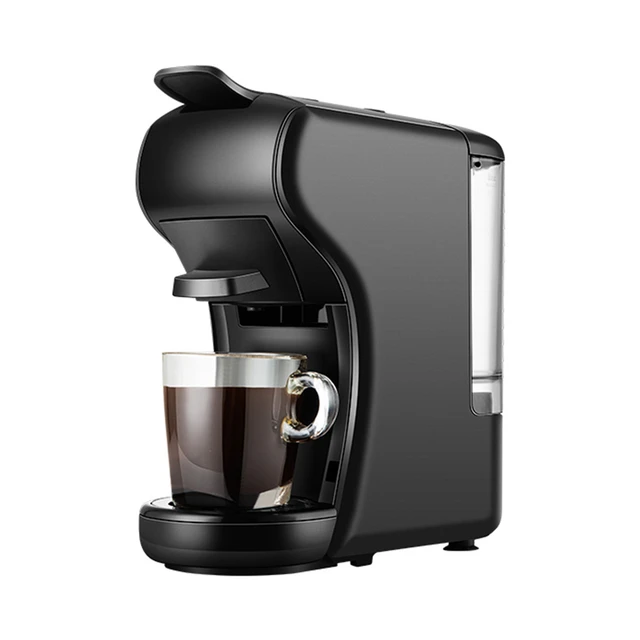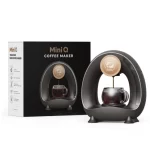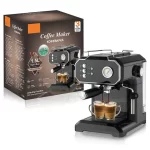Introduction
Filtering coffee without a machine is a convenient and accessible method for brewing a delicious cup of coffee when a coffee machine is not available or preferred. There are various manual techniques and tools that can be used to filter coffee grounds and extract the desired flavors. In this article, we will explore specific methods for filtering coffee without a machine, allowing you to enjoy a flavorful cup of coffee using simple household items or specialized manual brewing tools.

How do you filter coffee without a machine?
Paper Filter Method
Using a paper filter is a simple and effective way to filter coffee grounds and achieve a clean cup of coffee. Consider the following steps to filter coffee using a paper filter:
Boil water: Start by boiling water in a kettle or on the stovetop. The water should reach a temperature between 195-205°F (90-96°C) for optimal coffee extraction.
Grind coffee: Grind roasted coffee beans to a medium-coarse consistency, similar to sea salt, using a coffee grinder.
Prepare the filter: Take a paper coffee filter, such as a standard cone-shaped or basket-style filter, and place it in a funnel or a filter holder that fits securely over your cup or carafe.
Dampen the filter: Before adding the coffee grounds, wet the paper filter with hot water. This helps remove any papery taste and preheats the brewing vessel.
Add coffee grounds: Place the desired amount of ground coffee into the dampened filter. The recommended ratio is approximately 1 tablespoon of coffee per 6 ounces (180 milliliters) of water, but you can adjust based on personal taste preferences.
Pour hot water: Slowly pour the boiled water over the coffee grounds, ensuring that all the grounds are saturated. Start with a small amount of water to allow the coffee to bloom, then continue pouring in a circular motion until you reach the desired volume.
Allow the coffee to drip: As the hot water passes through the coffee grounds, it will filter into your cup or carafe. Allow the coffee to drip at a controlled pace, adjusting the pouring speed as needed to maintain an even flow.
Serve and enjoy: Once the dripping stops, remove the filter and discard it. Pour the freshly filtered coffee into your cup, and savor the smooth and flavorful brew.
Cloth Filter Method
A cloth filter, often made from a tightly-woven fabric like cotton or muslin, offers a more sustainable and reusable option for filtering coffee grounds. Consider the following steps to filter coffee using a cloth filter:
Boil water: Start by boiling water in a kettle or on the stovetop. Aim for a temperature between 195-205°F (90-96°C) for optimal coffee extraction.
Grind coffee: Grind roasted coffee beans to a medium-coarse consistency, similar to sea salt, using a coffee grinder.
Prepare the cloth filter: Take a clean and well-maintained cloth filter, ensuring it is free from any residual odors or flavors. Place the filter over a funnel or a filter holder that fits securely over your cup or carafe.
Wet and preheat the filter: Rinse the cloth filter with hot water to remove any lint or debris. This process also preheats the brewing vessel and helps reduce any unwanted flavors.
Add coffee grounds: Place the desired amount of ground coffee onto the cloth filter. Use a coffee-to-water ratio of approximately 1 tablespoon of coffee per 6 ounces (180 milliliters) of water, adjusting as per your taste preferences.
French Press Method
While commonly used as a brewing method itself, a French press can also be repurposed as a coffee filter for a cleaner cup of coffee. Consider the following steps to filter coffee using a French press:
Boil water: Begin by boiling water in a kettle or on the stovetop. Aim for a temperature between 195-205°F (90-96°C) for optimal coffee extraction.
Grind coffee: Grind roasted coffee beans to a coarse consistency, similar to breadcrumbs, using a coffee grinder.
Prepare the French press: Remove the plunger and filter assembly from the French press pot. Pour the desired amount of ground coffee into the pot, using a ratio of approximately 1 tablespoon of coffee per 6 ounces (180 milliliters) of water.
Pour hot water: Slowly pour hot water into the French press pot, ensuring all the coffee grounds are fully saturated. Use a circular motion to evenly wet the grounds, then allow the coffee to steep.
Steep the coffee: Place the plunger and filter assembly back onto the French press pot, but do not press down. Let the coffee steep for about 4 minutes to allow for optimal flavor extraction.
Press and filter the coffee: After the steeping time, gently press the plunger down, separating the coffee grounds from the brewed coffee. The filter on the plunger will effectively trap the grounds at the bottom of the pot, leaving behind a clean brew.
Serve and enjoy: Pour the filtered coffee from the French press pot into your cup, and savor the rich flavors and aromas of the freshly filtered brew.
Improvised Methods
When in need of a coffee filter but lacking specific tools, various household items can be repurposed in a pinch. Consider the following improvised methods:
Using a sieve or strainer: Place a sieve or fine-mesh strainer over your cup or carafe, ensuring it is stable. Line the sieve with a clean cheesecloth or a paper towel to act as a makeshift filter. Slowly pour the brewed coffee through the sieve, allowing the liquid to strain into the container while trapping the coffee grounds.
Reusable tea bags or cotton socks: If available, clean and unused reusable tea bags or cotton socks can serve as makeshift coffee filters. Fill the bag or sock with the desired amount of coffee grounds, tie it securely, and immerse it in hot water. Remove the bag or sock once the brewing is complete, ensuring the brewed coffee is free from grounds.
Paper towel or napkin: Fold a paper towel or napkin into a cone shape and place it over your cup or carafe. Wet the paper towel or napkin with hot water before adding the coffee grounds. Slowly pour hot water over the grounds, allowing the liquid to filter through the paper towel or napkin and into the container below.
Conclusion
Filtering coffee without a machine is not only possible but can also provide a delightful brewing experience. Whether using paper filters, cloth filters, repurposed French presses, or improvised methods, there are various ways to achieve a clean cup of coffee with distinct flavors and aromas.
By following the specific steps for each method and adjusting factors such as grind size, water temperature, and brewing time, you can successfully filter coffee without a machine. Embrace the flexibility and creativity of these methods, allowing you to enjoy a flavorful cup of coffee even without a traditional coffee machine or specialized equipment.


